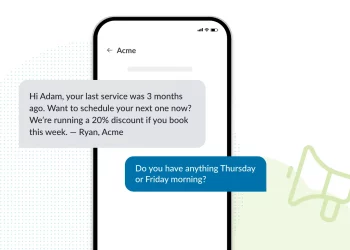In the bustling world of technology, where communication drives our interconnected lives, the term “SMS” has become an essential component of modern communication. SMS is a “Short Message Service,” a revolutionary technology enabling users to send concise text messages via mobile phones. This article explores the profound meaning of SMS in today’s fast-paced digital era, its historical evolution, its statistical impact, and its role in transforming how we interact.
Evolution of SMS
The roots of SMS messaging can be traced back to the early developments of mobile telephony. In the late 1980s and early 1990s, engineers sought a way to exchange brief messages between mobile devices. The first SMS message was sent by engineer Neil Papworth on December 3, 1992, to Richard Jarvis, then-director of Vodafone. This seminal event marked the beginning of a communication revolution.
Understanding SMS Messaging
SMS operates on a simple yet effective principle. When a user sends an SMS, the message is transmitted to the recipient’s mobile phone via a cellular network. With a character limit of 160 characters, SMS fosters concise and to-the-point communication. The advent of smartphones and advancements in mobile technology have further facilitated SMS exchanges, enhancing user experiences and enabling rich media attachments.
The Rise of SMS in Communication
Over the years, SMS has become a preferred communication tool. Its widespread adoption is due to its convenience, speed, and cost-effectiveness. Additionally, SMS has spurred a cultural impact, shaping how people communicate in the digital age. The emergence of the SMS language, characterized by abbreviations and emoticons, has become a language of its own among texters.
Statistical Insights
The global adoption of SMS messaging has been nothing short of extraordinary. With over 5.5 billion unique mobile phone subscribers worldwide, SMS is one of the most widely used communication channels. Studies reveal that SMS enjoys an astounding 98% open rate, making it a highly effective means of conveying crucial information.
Benefits and Limitations of SMS Messaging
SMS messaging offers a plethora of benefits. It enables individuals to stay in touch with family and friends, conduct business online, and send time-sensitive updates. SMS has become an integral part of mobile marketing strategies for businesses, with 75% of consumers preferring to receive appointment reminders and promotional offers via SMS.
However, SMS does have its limitations. The character limit can constrain the complexity of messages, necessitating clear and concise language. Moreover, considering potential privacy and security concerns, SMS may not be the most suitable medium for lengthy discussions or sensitive information.
SMS and Mobile Marketing
The realm of mobile marketing has been significantly transformed by SMS messaging. Businesses leverage SMS to engage customers, sending personalized offers, product updates, and event invitations. Successful SMS marketing campaigns have demonstrated impressive results, showcasing the power of this communication channel in driving customer engagement and boosting brand loyalty.
SMS in Crisis Communication
SMS messaging has also played a crucial role in crisis communication. Governments and non-profit organizations use SMS to disseminate emergency alerts, public safety information, and evacuation instructions during disasters. Its immediate delivery and broad reach make it a reliable tool in critical situations.
Future of SMS Messaging
As technology evolves, SMS messaging is adapting and innovating to remain relevant. Integration with other communication platforms, such as social media and chat applications, enhances its versatility. Experts predict that SMS will continue to be an integral part of modern communication, fostering efficient and instantaneous connections across the globe.
Ensuring Effective SMS Communication
To maximize the potential of SMS messaging, following best practices is essential. Writing explicit and engaging SMS content, respecting recipients’ preferences, and maintaining proper SMS etiquette contribute to effective communication.
Conclusion
With its profound meaning and historical significance, SMS messaging has become an integral part of modern communication. Its evolution from a simple text messaging service to a dynamic and versatile communication tool has reshaped how we interact. As technology advances, SMS remains steadfast, promising a seamless, concise, and meaningful future in our interconnected world.














